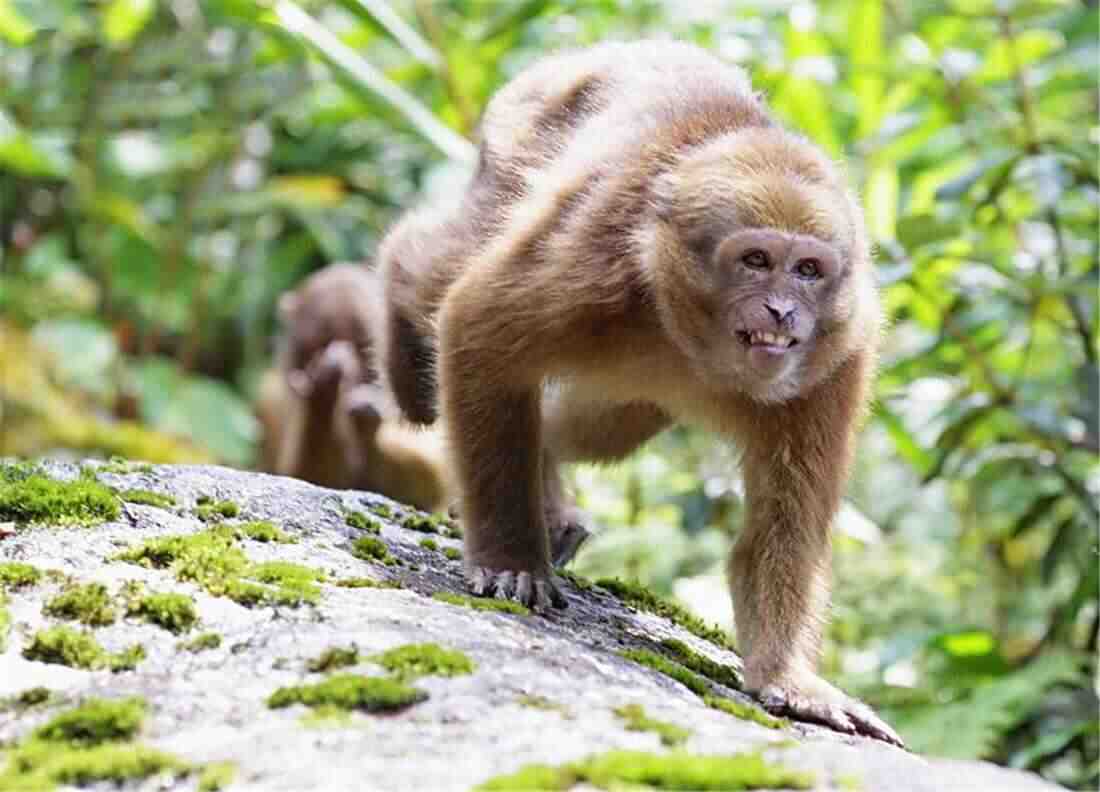Macaca assamensis
IUCN
LCBasic Information
Scientific classification
- name:Macaca assamensis
- Scientific Name:Assamese Macaque,Bear monkey, Rong monkey, Assam monkey, mountain macaque, Himalayan monkey, Assam short-tailed monkey, big green monkey
- Outline:Primates
- Family:Primates Cercopithecidae Macaca
Vital signs
- length:50-70cm
- Weight:10-15kg
- lifetime:16year
Feature
It looks a lot like a macaque, but is slightly larger than a macaque. It is named for its fat body and bear-like appearance.
Distribution and Habitat
World distribution: China, India, Nepal, Bhutan, northern Myanmar, northern Thailand, Laos and Vietnam.
The bear monkey is divided into two subspecies, both of which are distributed in China. The nominate subspecies is distributed in Myanmar, Thailand, Malaysia, Assam in northeastern India, and Guangxi, Guizhou, and northern Yunnan in China; the Himalayan subspecies is distributed in the southern foothills of the Himalayas, including Tibet, China.
The bear monkey lives in tropical and subtropical high mountain dense forests at an altitude of 1000-2000 meters, and especially likes to live on tall trees. It mainly lives in monsoon evergreen broad-leaved forests, deciduous broad-leaved forests, mixed coniferous and broad-leaved forests or alpine dark coniferous forests. The habitat and habits of the bear monkey are somewhat similar to those of the short-tailed monkey, but the bear monkey's habitat is relatively high. In southeastern Tibet and northwestern Yunnan, the altitude o
Appearance
The snout of the bear monkey is prominent, the whiskers and beard are quite developed, and it also has cheek pouches for storing food. The face is flesh-colored, and the old individuals have black spots on the face. The skin under the eyes is darker. The hair on the top of the head radiates from the center to the surroundings, presenting a "vortex". The hair on the head and neck is light yellow, while the body hair is brown, dark reddish brown, brown to dark brown, and the lower body and abdomen are generally pale. It is relatively fluffy but rough, not as fine as the macaque's body hair, and it does not have the orange-yellow luster on the macaque's body hair. There are a lot of hairs around the calluses on the buttocks; the brown tail is short and thin, like a small naked stick, less than half the length of the body. But some individuals have very long tails, even reaching the knees. The body hair of young monkeys will change with age and will be lighter than that
Details
The bear monkey is endemic to the Himalayas and Indochina. It looks very similar to a macaque, but is slightly larger than a macaque. It is named because of its fat body and bear-like appearance.

The call of the bear monkey is different from that of the macaque. It sounds like a dog barking, but with a hoarse sound. Like other macaques, the bear monkey can make a variety of expressions and send signals to communicate with each other. There are 20 to 30 different tones in the call alone, and there are many facial expressions and gestures.
The total number of the bear monkey in the entire distribution area does not exceed 300,000, of which more than 20,000 are in protected areas, which may be too optimistic. The distribution area of the bear monkey in China is relatively small, and the number is far less than that of macaques and short-tailed macaques, with an estimated number of about 8,000. The main factors for the decline of the bear monkey in China are the deforestation and destruction of the habitat and poaching. The bear monkey has been listed as a national level II key protected wild animal in China. Most of the population lives in nature reserves in Tibet and Yunnan and is well protected.
There are at least 41 protected areas in northeastern India, which are also some national parks. To help protect this species, in the habitats of some national parks in the Himalayas, educational programs are tried to promote and encourage local people not to cut down forests and use alternative energy instead of burning firewood. These measures have reduced the survival conflict between the bear monkeys and local people.
Listed in the "List of National Key Protected Wildlife in China" Level I.
Listed in the 2008 Red List of Endangered Species of the World Conservation Union (IUCN) - Near Threatened (NT).
On February 5, 2021, the bear monkey was adjusted from the first-level national protected wildlife to the second-level national protected wildlife.
Protect wildlife and eliminate game.
Maintaining ecological balance is everyone's responsibility!








